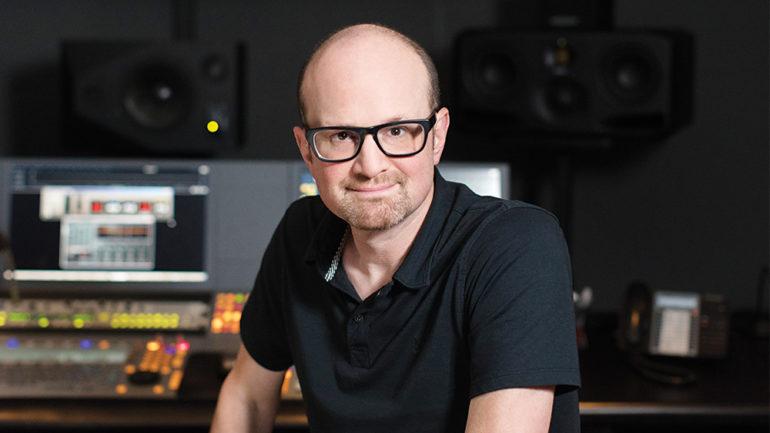How Comedy Dynamics’ High-Tech Editing Helps Fix Snafus With Stand-Up Specials
By Calum Marsh
LOS ANGELES (Variety.com) – It was a stand-up comic’s worst nightmare: Taking the stage a while back for the first of four shows that would be recorded for a TV special, the comic cracked under the pressure, mispronouncing a word at a pivotal moment in the joke and screwing up the punchline. Gaffes like this are exactly why comics record several shows in succession, so mistakes can be corrected in post-production — except this well-known comic, on a stream of miserable luck, proceeded to flub the same line again three more times.
So Brian Volk-Weiss, founder of Comedy Dynamics, which produced and distributed the show, had to get creative. He asked the comedian to come to the Comedy Dynamics’ Burbank studio a few days after the gigs. There, he and his team filmed the comedian repeating the joke in front of a green screen. Then they digitally cut-and-pasted his head onto his body in the original footage with some crafty editing and a bit of CGI. The result? A great show, and a well-delivered line.
“Do I think we needed to do it? No,” says Volk-Weiss, looking back. “The audience never would have given a s–t. But the artist was a perfectionist, and we want our artists to feel good.” In any case, the work was seamless. “If I handed you the DVD, you would never be able to figure out the moment, not in a thousand years,” he says.
This is an extreme example of the behind-the-scenes wizardry that goes into the making of a stand-up comedy special, a genre that has swelled in popularity thanks to streaming services like Netflix, which commission them almost endlessly. Comedy Dynamics has produced hundreds of these specials, and has mastered the art of blending sets, matching footage and making comics look their best.
For Volk-Weiss, the decision-making process starts long before the comedian has stepped foot onstage. There are dozens of questions to be settled based on the preferences of the comic, from lighting to production design to sound, most of which the average stand-up has never
had occasion to consider.
“Do you have walk-on music? Are you being announced? Do you want a wired mic or a wireless mic?” Volk-Weiss says. “These are small things, but they’re so important. A comedian might be used to the same thing for 10 years, and suddenly, once the cameras are rolling, one thing’s wrong and they’re completely disjointed.
“It’s really an art,” he says of the process. “Not a science.”
Consider the stage. You might not think it matters much what the comedian is standing on during his or her act. “We did a special where the comedian wanted there to be carpet. They had a horrible show,” he says. “They’d done 10,000 shows on solid surfaces! It messed everything up. We had to tear the carpet out between shows.”
The saving grace for most performances is repetition — running through the same act two or three times on camera in one night gives Volk-Weiss’ team options in the editing room. It’s there that Comedy Dynamics can radically improve the caliber of a show. “We can’t turn a D performance into an A,” he says. “But we can turn a C minus into an A minus easily.”
This is thanks in no small part to Brenda Carlson, an editor with Comedy Dynamics who has cut more than 200 specials. Volk-Weiss says Carlson is “the Mozart of stand-up-special editing,” and credits her with helping to perfect every show.
Carlson prefers that her work go unnoticed. “You want people to enjoy the comedian, and not pay attention to the editing at all,” she says. “The editing should not work against the jokes.”
It’s Carlson’s job to take the raw material of the gig — seven or eight cameras shooting two or three sets back-to-back — and sculpt it into something coherent, blending the best bits from each set into one punchy, hilarious whole. “I might go through and take out the ‘uhs’ and the ‘ums,’ or put two lines together if they flubbed the first part of a joke in one show and the second part of the same joke in the second show.”
Of course, the nitty-gritty of the edit can be complex, and requires the delicate touch of an editor with experience. Some comics leave it entirely in Comedy Dynamics’ hands; others prefer to be involved. “There are comedians that, as soon as the show wraps, shake our hands and never come into the editing bay, and to the best of my knowledge have never watched the special,” Volk-Weiss says. “Then there are comedians who spend, conservatively, 150 hours in the editing bay, going over every single frame.”
Comedy Dynamics can accommodate either approach. What’s important is that the comic is happy. “There’s a great saying the Air Force has,” Volk-Weiss says. “Make your pilots feel safe so they can be brave. That’s our outlook here.”

